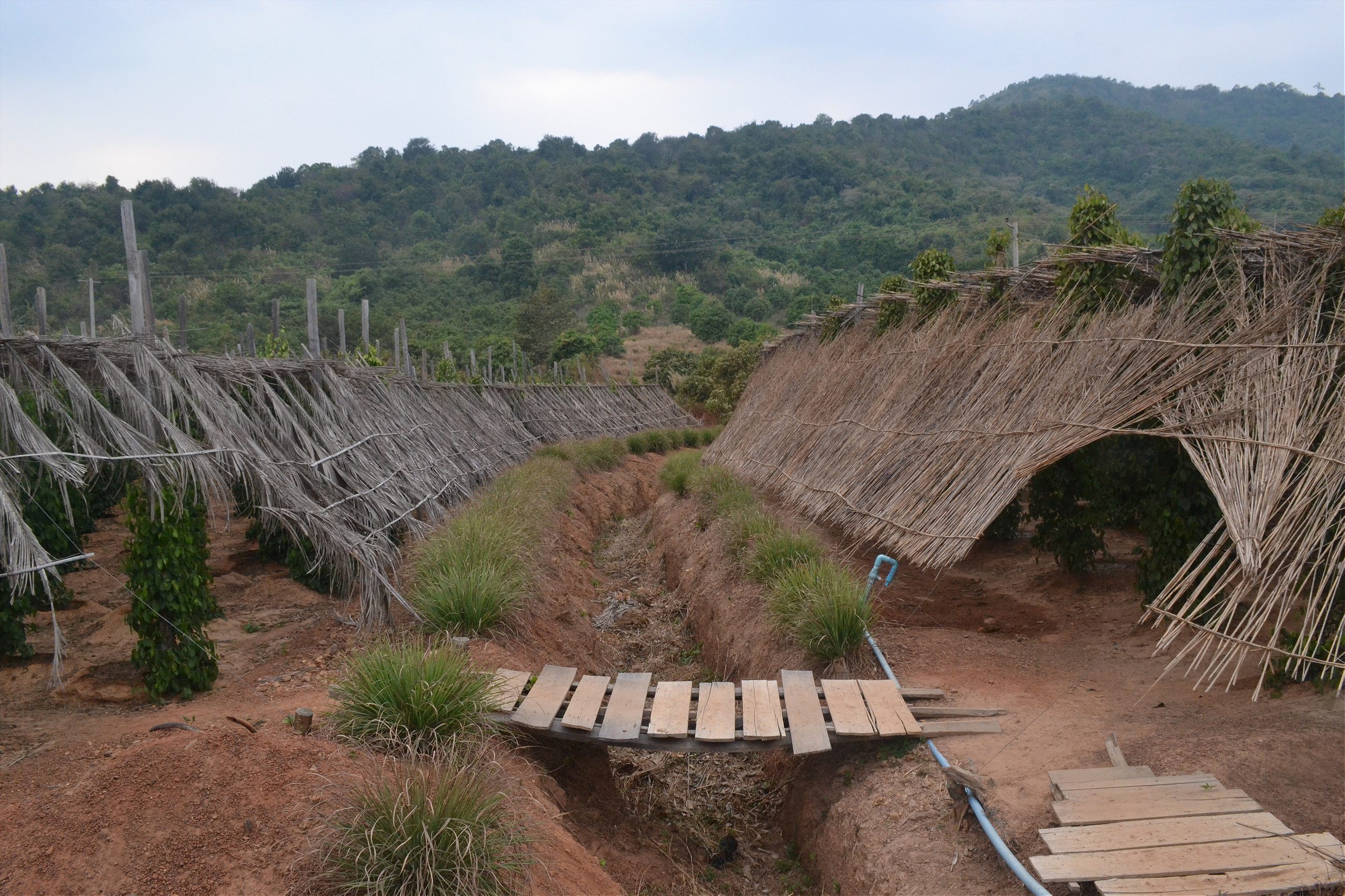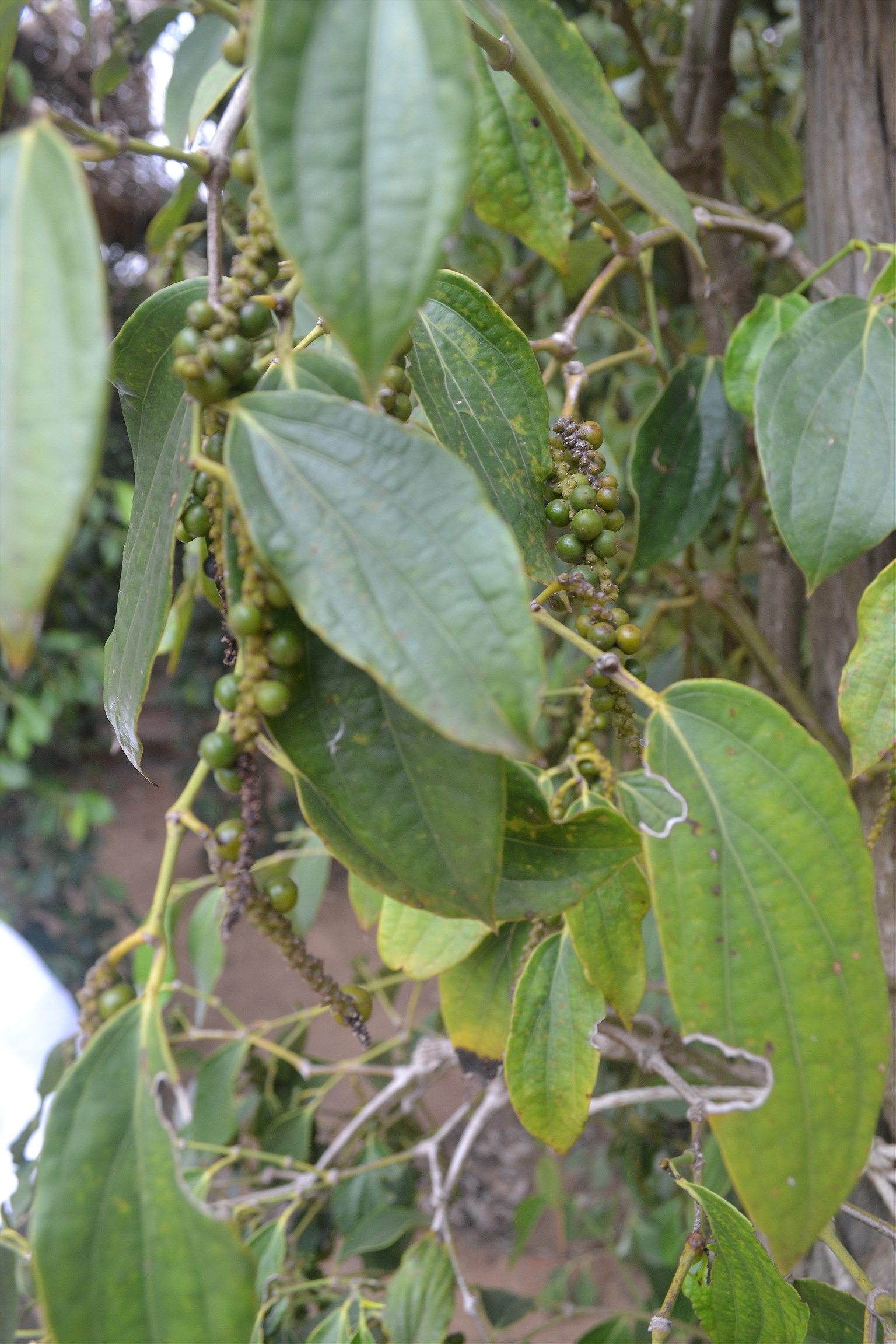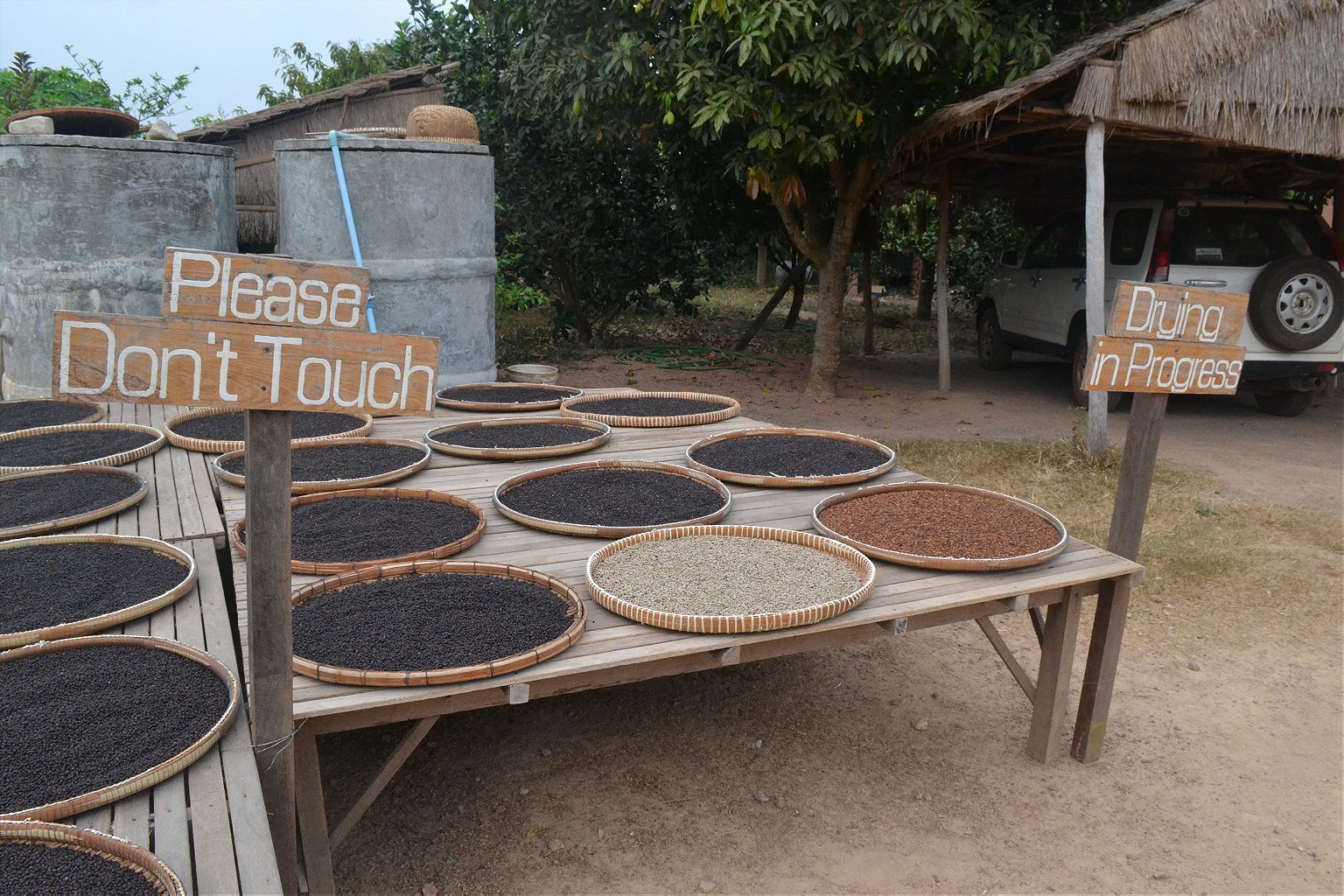In a remote corner of Cambodia, the world’s best pepper is making a comeback.
Off Highway 33, the only paved highway connecting Cambodia’s sleepy beach towns of Kampot and Kep, sits a small, red road marked by a faded signpost that reads Welcome to Peper Farm. My tuk-tuk driver misses the road entirely the first time around, and we swing across the barren highway to retrace our steps. The air is stagnant in the 98-degree heat. It hardly seems like the road leading to one of Cambodia’s most prized products: Kampot pepper.
Pepper—dubbed the “king of spice” as early as 3000 B.C.—grows on flowering peppercorn vines like miniature bunches of grapes. Popular around the world for its flavor-enhancing powers, peppercorn plants are native to tropical climates like south India and southeast Asia. This, however, is not the simple pepper found on tables everywhere. The Kampot pepper is often said to be the best in the world.
The dusty road, which crawls on for five relentlessly hot miles, is undoubtedly the place for pepper connoisseurs: roughly 342 farms registered with the Kampot Pepper Association dot this region, along with a number of unregistered farms.
I am headed to Sothy’s Farm, one of the smaller farms in the area at roughly ten acres. It’s the only farm in Kampot that is entirely off the grid, and I’m eager to see how the farm manages to produce massive quantities of pepper using only their own resources.
Norbert Klein, the owner of the farm along with his wife, Sorn Sothy, greets me, wearing a large straw hat. German by birth, Klein grew up in the former Yugoslavia before coming to Cambodia in 1990 to help develop Cambodia’s Ministry of Agriculture department. He hasn’t left the country since.

Klein and his wife bought Sothy’s Farm, which generates its own electricity using solar panels, three years ago. Neither Klein nor Sothy had experience farming; they met in Phnom Penh while Sothy was tutoring Klein in Khmer, but both were eager to leave the city. When they saw a pepper farm was for sale three years ago, they jumped at the chance. Now, Sothy, who is Cambodian, is dedicated to the spice.
“When I go outside Kampot and try other pepper, I can taste the difference. I can taste when it’s not real,” she says.
The farm had a mere 300 peppersticks, as the stakes on which the peppercorns grow are called. Now they have 850 sticks and export to Australia, Belgium, the Netherlands, France, and Germany. But the farm is newer and smaller than some of the more established mass-production farms, many of which have been around since the French colonized Cambodia and can boast up to 12,000 peppersticks. Although using chemical pesticides and fertilizers isn’t illegal, none of the registered farms use them, and at Sothy’s, naturally grown bitter leaves replace pesticide and manure is used for fertilizer.
But the secret to Kampot pepper has little to do with the farm’s organic agenda; the secret to Kampot’s pepper actually comes from the quartz in the soil.
“The quartz is indigenous to this region, it’s all over the soil here,” Klein explains. Some describe the flavor imparted by the quartz as an added fragrance, like eucalyptus or jasmine. It is this delicately floral characteristic that makes Kampot pepper prized around the globe.
“The pepper is very difficult to grow,” Klein explains as we walk to the farm’s youngest peppercorn field, which has been in cultivation for just a year. “It takes three years to develop, and that’s without droughts or flooding.”

Though endemic and sturdy, the plant is extremely sensitive to sunlight. Most farms in Cambodia have built man-made forests in which peppercorn vines can snake up stakes that are shaded by dried bamboo leaves. The plants are watered every few days.
“We use cow manure and bat manure for fertilizer,” Klein says.
“Bat manure?” I ask, unfamiliar with the fertile properties of guano.
“It’s a great fertilizer. There are caves here along these mountains where villagers collect the feces and sell it to us,” he says, gesturing to the mountainous green jungles that surround us.
Pepper production in Kampot was recorded as early as the 13th century. In 1297, the Chinese emissary Zhou Daguan traveled around Cambodia and mentioned pepper in his reports on the Angkor temple. Kampot’s airy sea climate and the quartz found in the soil distinguish its pepper from the other tropical climates, like south India’s rainforests, in which pepper is typically grown. But Kampot pepper didn’t become well-known outside of Asia until 1863, when French officials discovered the Kampot province off the Gulf of Thailand, and in turn, the pepper farms. A booming pepper export industry exploded in the 1930s and 1940s, when roughly 100 tons of pepper were produced a year and sent to high-end restaurants in Paris.
But when Pol Pot and the Khmer Rouge took power in 1975—wiping out nearly 1.8 million Cambodians in a warped Marxist revolution that quickly became a genocide—all exports from the country were strictly banned. Pepper farms were burned or converted into rice fields. Those not killed by the Khmer Rouge were sent to work in labor camps harvesting rice, part of Pol Pot’s vision to convert Cambodia into a purely agrarian society. He wanted to triple Cambodia’s agricultural production in a year; many starved to death. Kampot pepper nearly went extinct.
“Only in 1990 did people start to return to the area to collect pepper again,” Klein says. Pepper farms began to reappear, but in scarcer numbers; exports dropped from 1,000 tons to four tons annually. The Kampot province was still considered unsafe as a stronghold of Khmer Rouge guerillas that were hiding in the jungles. In 1994, a train crossing through the area was hijacked, and 14 were slaughtered, including three foreigners. The area wasn’t deemed safe to return to until after 1998, when Pol Pot, who had been in hiding, died.
We walk across the farm to the more mature pepper field, whose peppercorns would be ready for harvest sometime between February and May.
“You never know when they will come,” Klein says. “They decide when they want to.”
Green, black or brown, and white peppercorns are all different iterations of the same plant. Before maturation, the peppers are all bright green. When the plants are sprinkled with ripe, red peppercorns, they’ll be ready for harvest. Klein inspects a plant, which hangs like a limp bunch of grapes.
“No, not ready.”
When the red begins to emerge, the pepper is removed from the stem by hand and left in the sun to dry. The green peppers turn brown in two days, Klein says. The red ones are separated out and dropped into boiling water, which produces both red pepper and white pepper, which appears if the red skin sloughs off in the water. Two women sit separating the colors by hand in the shade.

Thanks to consumer demand and a labor-intensive process, Kampot pepper commands high prices. Generally, peppercorns sell at roughly $25 per kilo; authentic Kampot pepper sells at $48 for black pepper and $58 for red and white pepper. With that kind of price differential, fake Kampot pepper entered the market in 2009, quickly becoming a problem for both local and export markets.
“The counterfeit pepper market has become a serious problem. Most of what you find sold in Cambodia is counterfeit Vietnamese pepper with chemicals,” Klein explains, contrasting that to his own organic process. “We don’t use chemicals, but of course, the yield is much less.”
Kampot pepper was awarded “Protected Geographical Location” (PGI) status by the European Union in 2010, an exclusive ranking reserved for delicacies like France’s Gruyere cheese or India’s Darjeeling tea. But due to a rising counterfeit market, the European Union passed a new and stricter protection in March ensuring that if Kampot pepper had no PGI label, then it wasn’t “authentic,” or from the Kampot region. Pepper is the only product in Cambodia to obtain PGI status, and one of the only food products exported from the Kingdom; most everything, including fruits and vegetables, are imported from neighboring Vietnam and Thailand. The recent European Union rule is a feather in the cap for many Kampot pepper producers, and many predict pepper product, which doubled between 2014 and 2015, will continue to expand.
As the early evening coolness begins to set in, Klein invites me to join the staff for the farm’s three-year anniversary feast. The Phnom Voar Mountains lay in ripples of eerie emerald before us, the same jungles Khmer Rouge guerillas took refuge in until the late 90s. A large buffet of fresh seafood from the neighboring seaside—grilled octopus, shrimp, and mussels, along with Cambodia’s beloved Angkor beer—is spread out in the dining area. The food is dotted in pepper, but when I sit to eat, I am ritualistically handed a pepper shaker. A French volunteer who’d been on the farm for a month tells me she has pepper with every meal: with porridge, in rice, on pancakes.
I take a bite. It could be a placebo effect, but the pepper really is like no other pepper I’ve ever tasted, and fits with the romantic descriptions I’ve heard so many times: sweet, soft, delicate, floral, spicy, fragrant.
I ask Klein and Sothy if they’d ever leave the farm.
Sothy shakes her head no.
“We didn’t know how this would go, or if we’d be able to make money. But we found a home here now. I don’t think we’ll leave.”
I fall asleep to the sounds of the jungle that night—crickets chirping, a frog gently croaking, the distant screeching of a monkey or owl—and the sweet and distant smell of a spice that was nearly lost a half century ago.